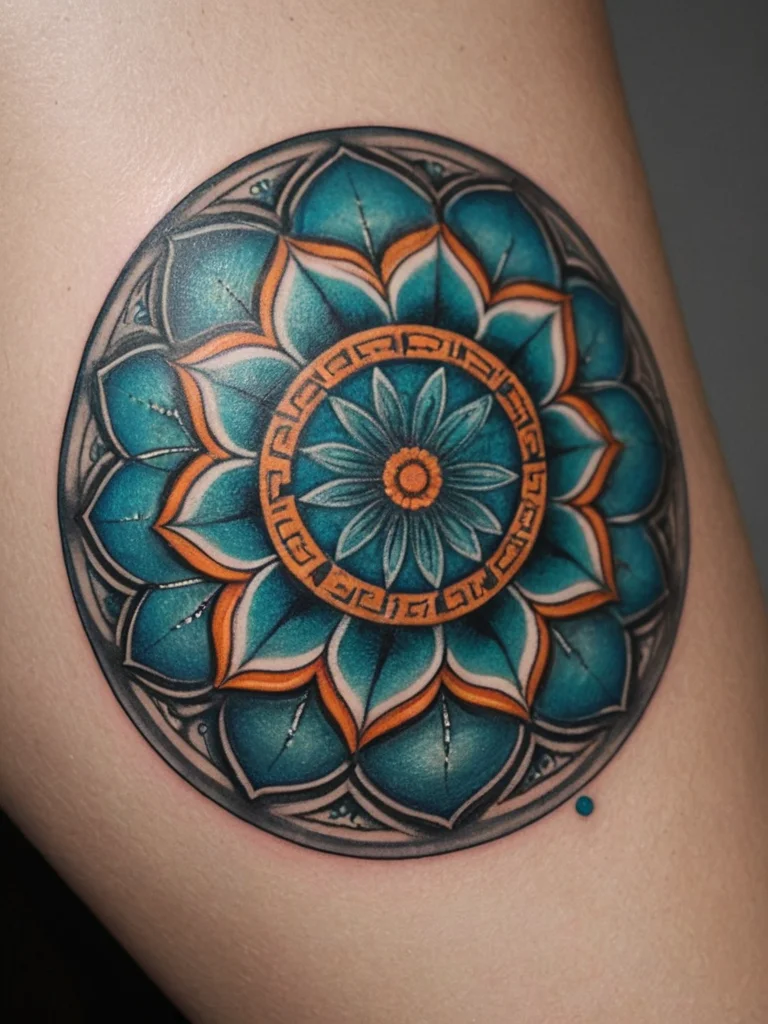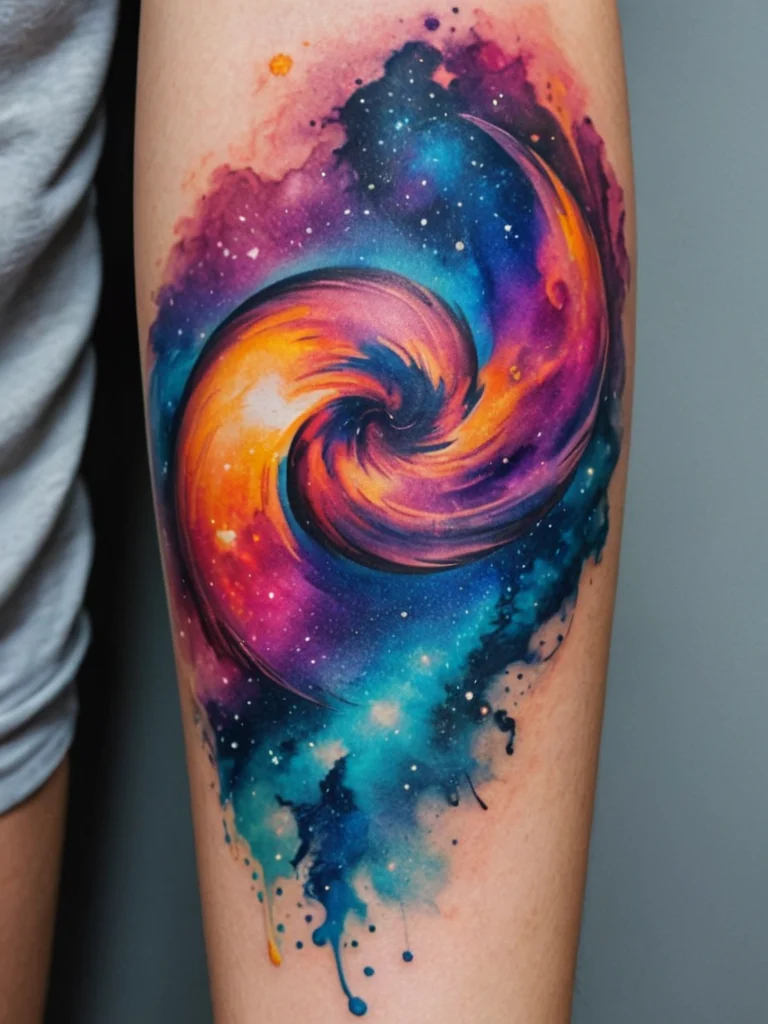The world of tattooing, a practice steeped in millennia of human expression, is currently undergoing a profound transformation. This evolution is largely driven by the pervasive influence of digital art and technology. What was once an art form relying solely on hand-drawn sketches, stencils meticulously crafted by hand, and the artist’s immediate tactile experience is now increasingly intertwined with the power of pixels, algorithms, and digital canvases. This synergy between the digital realm and the physical act of tattooing is not just a fleeting trend; it represents a fundamental shift in how tattoo designs are conceived, refined, and ultimately brought to life on the skin. For enthusiasts and artists alike, understanding this digital revolution is key to appreciating the innovative directions the industry is heading. Tattoo artists recommend embracing these new tools to expand creative horizons, while clients can look forward to increasingly intricate, personalized, and visually stunning tattoo experiences. Historically, tattoo design was a deeply personal and often slow process, but digital tools have accelerated and democratized many aspects of it, opening doors to possibilities previously unimaginable.
Digital tools transforming tattoo design: unleashing new possibilities

The advent of digital art software and hardware has revolutionized the foundational stages of tattoo design, offering an unprecedented level of control, flexibility, and creative exploration. Gone are the days when an artist’s vision was limited by the physical constraints of paper, pencils, and inks. Today, sophisticated software like Adobe Photoshop, Procreate, Affinity Designer, and Clip Studio Paint serve as powerful digital sketchbooks and design studios. These platforms allow artists to work with layers, undo mistakes effortlessly, experiment with an infinite palette of colors and textures, and manipulate images with precision. For instance, an artist can create a complex, multi-layered background for a backpiece, meticulously adjusting the composition, depth, and color blending digitally before ever touching a stencil. This iterative process, which might have taken days or weeks with traditional methods, can now be accomplished in a fraction of the time, allowing for more refinement and client feedback cycles.
Furthermore, digital tools enable the creation of highly intricate details and patterns that would be exceedingly difficult or impossible to achieve by hand. Vector graphics software, for example, allows for the creation of perfect geometric patterns, sharp lines, and scalable designs that can be flawlessly transferred to any size. This is particularly impactful for styles like geometric tattooing, dotwork, and intricate linework where precision is paramount. Artists can generate complex fractal patterns or hyper-realistic textures that can then be adapted for tattoo application. The ability to zoom in to an extreme level of detail means that artists can perfect minute elements, ensuring that every line and shade is exactly where it needs to be. This precision translates directly to the final tattoo, resulting in cleaner lines, smoother gradients, and a more polished overall aesthetic.
Beyond static designs, digital tools also facilitate the creation of dynamic and animated concepts. While animation itself isn’t directly tattooed, the principles of movement and sequencing learned through digital animation can inform tattoo composition. Artists can sketch out sequential poses for a character tattoo or plan the flow of a large-scale piece to appear dynamic on the body. Augmented reality (AR) apps are also beginning to bridge the gap between digital concepts and their physical realization. Clients can use AR to preview how a tattoo design might look on their skin in real-time, rotating it, resizing it, and seeing it from various angles before commitment. This not only enhances client confidence but also allows for more collaborative design adjustments, ensuring the final piece is perfectly suited to the individual and their body’s contours.
Exploring new aesthetic frontiers: how digital art influences tattoo styles

The accessibility and versatility of digital art have undeniably expanded the stylistic boundaries of tattooing, inspiring entirely new aesthetics and reinterpreting existing ones. One of the most noticeable impacts is in the realm of hyperrealism and surrealism. Digital painting techniques allow artists to achieve photo-realistic effects, rendering textures, lighting, and depth with incredible fidelity. This translates into tattoos that mimic photographs, featuring breathtaking detail in portraits, intricate still lifes, or fantastical, dreamlike scenes that defy conventional visual logic. Artists can meticulously build up layers of digital color and shading to mimic the subtle transitions and highlights found in nature or artificial light, achieving a level of realism on skin that was once difficult to attain.
The rise of abstract and generative art also finds a powerful outlet through digital tools. Algorithms can be used to create unique, complex patterns and forms that are inherently unpredictable and organic. Artists can guide these algorithms, tweaking parameters to produce designs that are entirely novel, offering clients truly one-of-a-kind pieces. This approach often results in tattoos with an ethereal or otherworldly quality, characterized by flowing lines, intricate geometric structures, or swirling color fields that seem to evolve and shift. Furthermore, digital manipulation allows for the seamless integration of disparate elements, creating surreal collages or mind-bending compositions that play with perception and reality. Imagine a portrait that dissolves into geometric patterns, or a landscape that merges with anatomical structures – these are concepts readily explored and refined using digital art software.
Specific tattoo styles have also been directly influenced. The precision afforded by digital design is a boon for styles like **geometric tattooing**, which relies on perfect lines, angles, and symmetry. Artists can plan intricate mandala patterns or complex tessellations with mathematical accuracy, ensuring that the final tattoo is visually harmonious and flawless. Similarly, **dotwork** and **stippling** techniques, which involve creating shading and texture through the careful placement of numerous dots, benefit immensely from digital planning. Artists can map out dot density and placement with pixel-level accuracy, achieving smoother gradients and more detailed textures than ever before. Even traditional styles are seeing digital influence, with artists using digital tools to refine classic motifs, experiment with color palettes, or create modern interpretations of iconic imagery, ensuring that traditional tattooing continues to evolve while respecting its roots.
The artist’s workflow: integrating digital art into tattoo creation

For many tattoo artists, the integration of digital tools has become an integral part of their workflow, enhancing efficiency, collaboration, and the overall quality of their output. The process typically begins with the initial consultation and idea generation, where artists can use tablets and styluses to quickly sketch concepts based on client discussions. Unlike traditional pencil sketches, these digital drafts can be easily modified, colorized, and refined based on feedback. This allows for a more dynamic and collaborative design process, where the client feels more involved and confident in the direction of their tattoo. Artists can present multiple variations of a design almost instantly, exploring different compositions, color schemes, and stylistic approaches without the need for multiple physical redraws.
Once a design direction is finalized, artists leverage digital software for meticulous detailing and preparation for the stencil. Sophisticated programs allow for the creation of high-resolution images that can be scaled precisely to fit the intended area of the body. Artists can meticulously plan the placement and flow of the tattoo, considering the body’s natural curves and musculature. This digital blueprint is then transferred to stencil paper, often using specialized printers, ensuring that the stencil is a perfect, high-fidelity representation of the digital artwork. Some artists even use digital stencil printers that directly output the stencil onto a special transfer paper, minimizing any potential loss of detail that might occur with manual tracing. This precision in stencil creation is crucial for executing clean lines and accurate placement during the tattooing process.
Furthermore, digital workflows enable artists to better manage their portfolio and client communication. High-quality digital renderings of completed tattoos can be easily shared online, attracting new clients and showcasing the artist’s evolving style. Cloud storage and digital asset management systems allow artists to organize vast libraries of past designs, reference materials, and client projects efficiently. This organized approach not only streamlines the artist’s business operations but also ensures that they can consistently deliver high-quality, well-planned custom work. Many artists also utilize digital platforms for client consultations, sending mock-ups and proofs electronically, making the entire process more transparent and accessible, especially for clients who may not be able to visit the studio frequently for design sessions.
Conclusion: the future of ink – embracing the digital age in tattoo artistry

The intersection of digital art and tattooing marks a significant and exciting chapter in the history of body art. It’s clear that technology is not replacing the fundamental skill, creativity, and human touch of the tattoo artist, but rather augmenting it, providing them with powerful new tools to express their visions and cater to clients’ desires with unparalleled precision and scope. This digital integration allows for greater customization, intricate detail, and stylistic innovation, pushing the boundaries of what is possible on skin. As technology continues to advance, we can anticipate even more sophisticated digital tools and techniques becoming available to tattoo artists, from advanced AR visualizations to AI-assisted design elements, further enriching the creative process.
For those considering a tattoo, understanding the role of digital design can empower you to have more informed conversations with your artist. You can explore a wider range of styles and concepts, and appreciate the meticulous planning that goes into creating your unique piece. Artists, in turn, are encouraged to embrace these digital advancements, not as a replacement for traditional skills, but as a complementary set of instruments in their creative arsenal. The future of tattoo artistry lies in this harmonious blend of tradition and innovation, where the timeless craft of tattooing is amplified by the limitless potential of the digital world. By leveraging digital tools, artists can continue to elevate the art form, ensuring that tattoos remain a vibrant, evolving, and deeply personal mode of self-expression for generations to come. The digital revolution in tattooing is not about losing the soul of the art; it’s about giving it new wings.